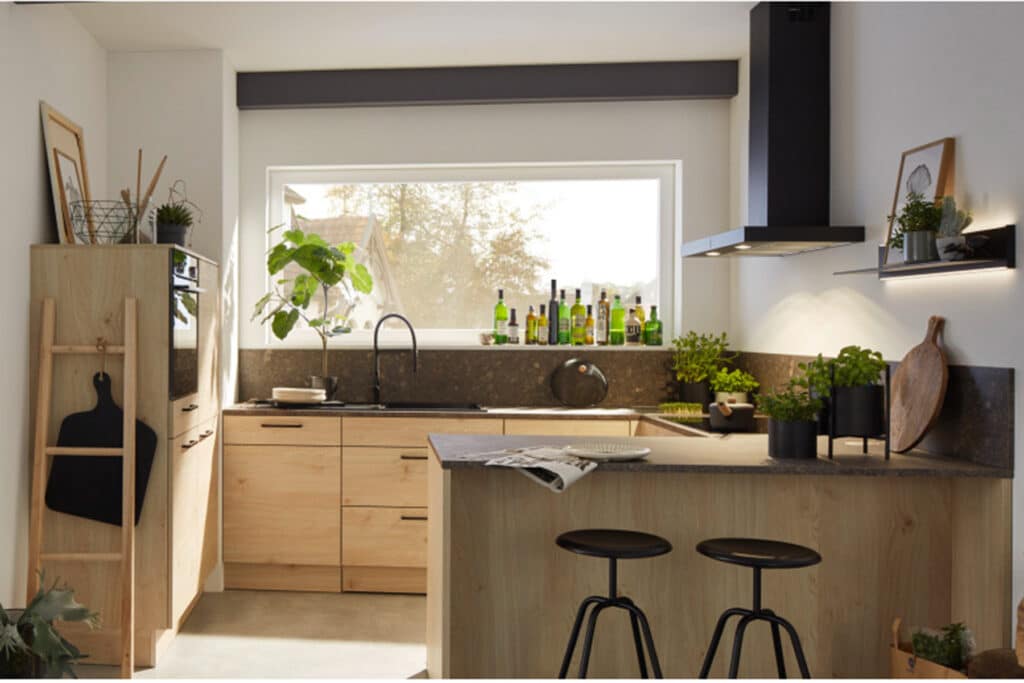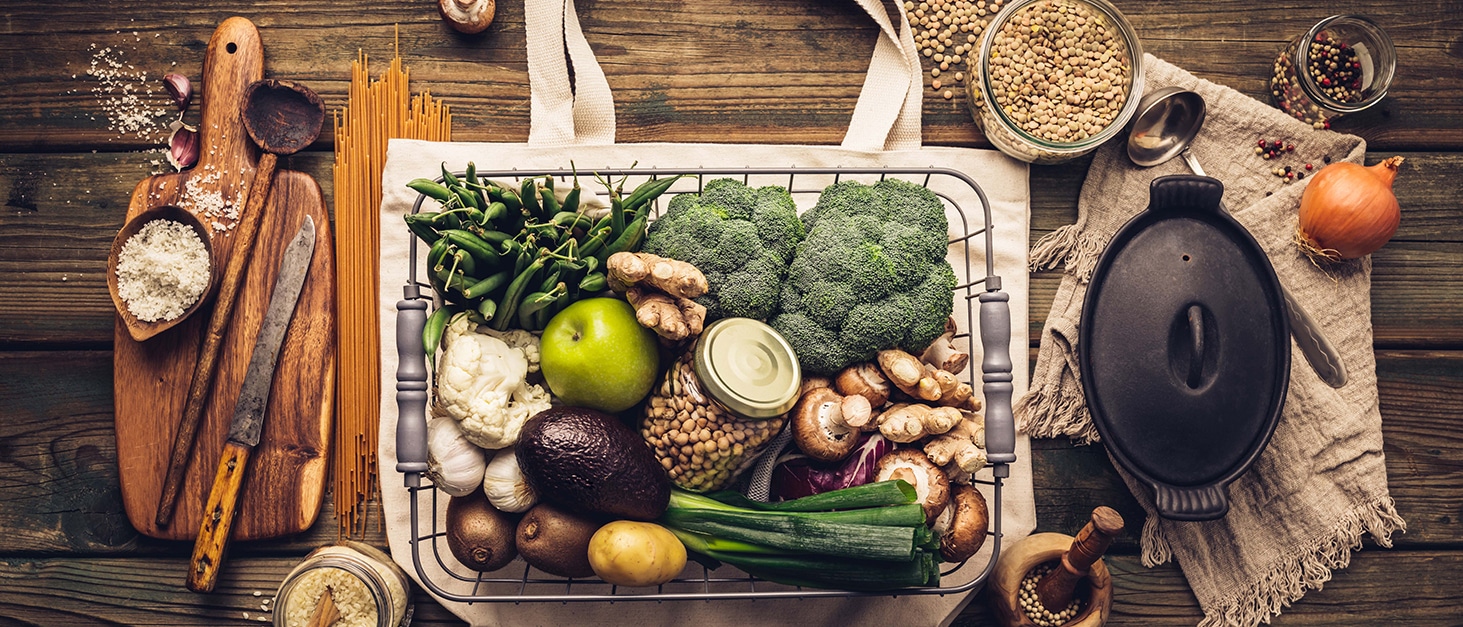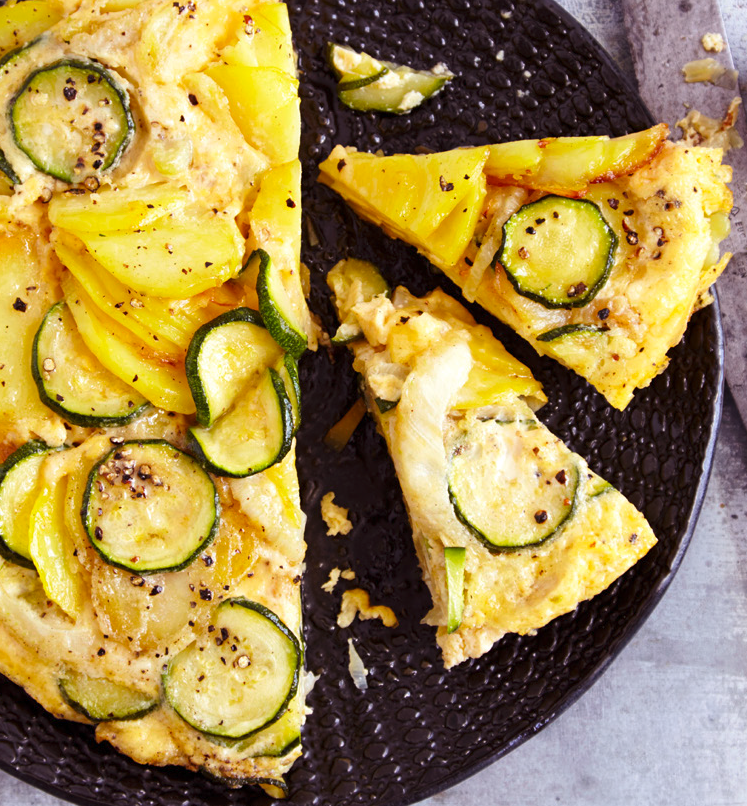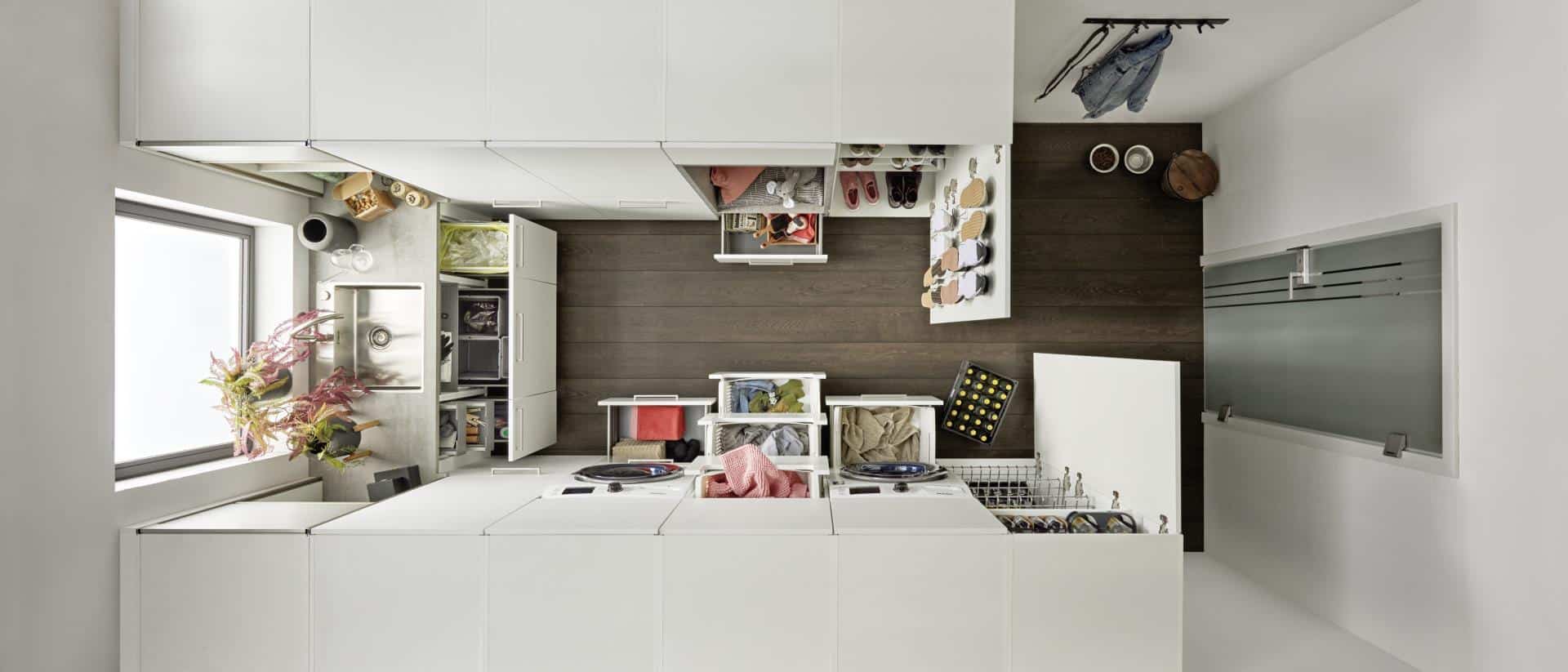What does sustainable kitchen mean?
The sustainable or ecological kitchen embraces a whole raft of considerations. It all starts with the choice of kitchen furniture which should be produced with a focus on conserving resources, continuing on to using kitchen appliances that are as energy-efficient as possible, ecological cleaning and extending right through to shopping. Unpackaged food, regional and seasonal products,as little meat as possible, waste sorting, avoiding plastic of all kinds, preserves in jars rather than tin cans – all these things and much more besides are part of a kitchen that is to be or become sustainable. And also using a shopping list to avoid unplanned purchases, some of which may have to be thrown away later on. Because disposing of perished food and unfit for use weighs on a kitchen's sustainability footprint.
The benefits of a sustainable kitchen
The principle of sustainability is characterised by the fact that it not only benefits the environment and conserves resources. No, people benefit too. Let us show you why.
Sustainable kitchen cabinetry and appliances are made from materials that are either of natural origin – in the case of cabinets, for example, wood from certified forestry, stone, bamboo or similar materials – or from materials that contain as few harmful substances as possible or none at all. Because using cabinets and appliances constantly releases these pollutants, leaving a negative impact on our health. Incidentally, the materials used for making furniture are only sustainable if their transportation to the place of processing involves only short distances, keeping pollutant emission low.
Needless to say, quality and workmanship also play a key part. Cabinetry, appliances and materials are only sustainable if you don't have to make new purchases all the time. In the long run, hard-wearing products save hard cash. When buying large electrical appliances for the kitchen, the focus should be on energy efficiency class. This criterion tells you how much electricity refrigerators, dishwashers or freezers use. This is not only kind on the environment, but also makes financial sense for you – after all, you have to pay for the energy they use.
Of course, the sustainable kitchen also includes recipes that are environmentally friendly, climate-friendly and sustainable. These recipes start as early as the ingredients, i.e. with shopping, for which the above list provides a number of examples. Yet, sustainable, climate and eco-friendly recipes also take into account that, for example, the oven does not have to be on for hours on end, or that the focus doesn't have to be on regional products only but can also use food that's in season. By the way, carrots and white cabbage come with the smallest CO2 footprint.
How to furnish your sustainable kitchen
You have to start somewhere if you want to furnish and design your kitchen in a sustainable way. So, why not with choosing ecological kitchen cabinetry? This not only includes cabinets and worktops, but also the kitchen table and chairs. Yet kitchen furniture is by no means sustainable if it's simply made of wood – there's far more to it than that.

Choosing sustainable kitchen furniture
Although wood is, by its very nature, a renewable resource, if it comes from regions where forests are cleared on a large scale to make land available for grazing cattle, for example, wood can no longer be termed a sustainable material. Make sure that the wood used as the raw material for making your kitchen furniture carries a label, such as the FSC and PEFC certificate. This will ensure that the wood for your kitchen furniture comes from manufacturers who produce at least individual items of furniture in a climate-neutral way, offset their CO2 emissions within set deadlines or at least deal openly with their CO2 emissions (while at the same time making every effort to reduce them). There are also other labels, such as the Golden M, ÖkoControl, Blue Angel, Eco-INSTITUT or PEFC. Later on, we'll come back to what they mean and the requirements furniture manufacturers need to meet to receive such labels for their furniture.
But it doesn't always have to be wood. Today there are good alternatives available, particularly for your worktop. Neolith, for example, a ceramic material that looks and feels like stone. It is extremely hard-wearing, recyclable and is made from a blend of silica, feldspar, clay and mineral oxides. Natural stone is also ideal as it's not compounded which means it can be produced using an extremely low amount of energy.
But it doesn't always have to be wood. Today there are good alternatives available, particularly for your worktop. Neolith, for example, a ceramic material that looks and feels like stone. It is extremely hard-wearing, recyclable and is made from a blend of silica, feldspar, clay and mineral oxides. Natural stone is also ideal as it's not compounded which means it can be produced using an extremely low amount of energy.
Tips on choosing ecological materials
When choosing the right materials for your sustainable kitchen, you can, of course, take guidance from the points mentioned above. Yet you should always make sure that the kitchen's design appeals to you too – with no compromising. After all, it's also important for you to feel at ease in your ecological kitchen and enjoy spending time there. So, when making your choice, look out for the labels mentioned and chemical-free materials, but also make sure you go for a design you absolutely love.
Sustainable kitchen furniture often goes hand in hand with understated, elegant design. If you keep the furnishings on the simple side, then a few new accessories in the kitchen are usually all you need to create a stunning look. This not only means using a minimum of materials and saving resources, but also money and input. And savings are also sustainable.
Remember to spare a thought for greening up your kitchen. If you use a few potted herbs for decoration, you can underscore the kitchen's sustainable character with this type of planting alone – and even derive practical benefit from them when cooking. But it's not only in culinary terms that you benefit from greening up your kitchen. Plants, like weeping fig, calathea (prayer plant), white sail, flamingo flower or various indoor ferns, not only look attractive, they also purify the air and make your kitchen even more ecological and healthy.
Sustainable Kitchen appliances and utensils
The major electrical appliances and the kitchen's cabinetry define the first impression a kitchen leaves. But if you want to furnish a kitchen sustainably, ecological kitchen furniture and energy-saving appliances alone are not enough. Because, needless to say, the ecological idea continues through at all levels. We are talking about containers and kitchen gadgets, like fish slices, cooking spoons etc.
Inspect your cupboards and take a look at the storage containers you use to keep foods in, like cornflakes, muesli, pasta, garlic or onions. And are there possibly not other containers in the refrigerator you keep cheese and cold meats in? They will probably be stored in plastic containers too. To call a kitchen sustainable, it's essential to see plastic food storage boxes vanish from the kitchen – not necessarily immediately, but at the latest when you need new kitchen helpers and ways of storing food. There are plenty of outstanding alternatives that are also much better for storing food.
Garlic and onions keep longer if you refrigerate them in a screw-top glass container, such as a rinsed-out jam jar. Small clay containers are also ideal for this purpose. Simply fill unprocessed food, like pasta, into tall glass containers which, at the same time, will also make an attractive decorative element for your kitchen. Muesli, nuts, cornflakes and the like can be stored much more sustainably in glass containers than in plastic boxes. Incidentally, this also applies to food that's already been cooked, i.e. if you have a few portions left over after a meal. As a general rule, simply don't use plastic storage containers any more – not even short term. This comes with another benefit: no microplastics or plasticisers can get into your food. This is a latent danger with food storage containers. A study by Ökotest has shown that these products release microplastics and formaldehyde in everyday use.
Conclusion
What makes a sustainable kitchen worthwhile
Long gone are the days when only younger people cared about sustainability matters, like protecting the environment and avoiding wasting resources. And as we spend most of our time at home, in our own four walls, this is precisely where we should start to take action and promote sustainability and green thinking. A central place here is the kitchen. Whereas, cheap was once almost the only criterion for furnishing a kitchen, many have now given way to realising there is no way round protecting the environment, conserving nature and using resources sparingly.
Now this doesn't mean getting rid of all plastic kitchen utensils in your possession – fish slices, cooking spoons, salad servers and the like – straight away, it's only about furnishing a new kitchen. And that's where it pays to think sustainably and go for products which contain no harmful substances, are manufactured wherever possible without emitting much CO2 and from materials certified as being sustainable. This is not only good for the environment and your health. Long term, it's also good for your purse or wallet. Because sustainably produced items often last longer than plastic products, which quickly become brittle and also permanently lose minute particles that get into the environment, so-called microplastics. Electrical appliances of any size will be energy-efficient in a sustainable kitchen, and if you are also mindful when buying food, storing it and cleaning the kitchen, you will be meeting all the key criteria that go into creating a sustainable kitchen.
The benefits are obvious. We will be protecting the environment, conserving resources and benefiting our health while also saving money in the long term.



